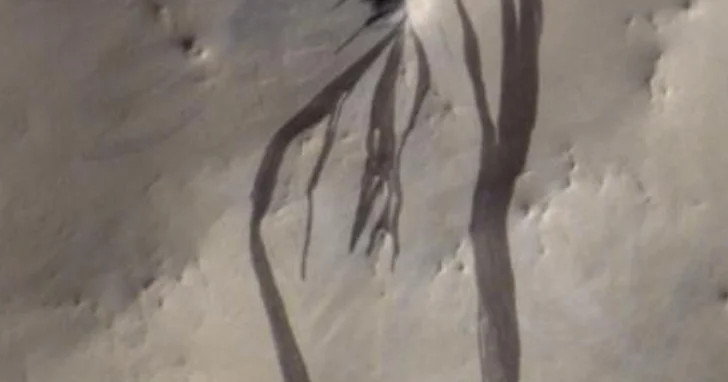
Martian Streaks: New Research Debunks Water Flowing Theory, Suggests Dry Processes
For years, the enigmatic dark streaks snaking down the cliffs and crater walls of Mars have fueled speculation about the presence of flowing water on the Red Planet. The discovery ignited the imagination, prompting scientists to explore the possibility of present-day habitable environments. However, new research published in Nature Communications challenges this long-held belief, suggesting that these **recurring slope lineae (RSL)** and other streaks are not water-related at all.
This revelation could significantly alter our understanding of Mars' climate, weather patterns, surface evolution, and potential for life. Let's delve into the findings that are reshaping our perception of the Red Planet.

The study, led by Valentin Bickel from the Center for Space and Habitability at the University of Bern, Switzerland, and Adomas Valantinas from Brown University, focused on a comprehensive analysis of over half a million streaks using machine learning techniques. By cataloging 13,026 bright and 484,019 dark slope streaks, the researchers created a global map of these features, allowing them to compare their distribution with various environmental factors.
"Once we had this global map, we could compare it to databases and catalogs of other things like temperature, wind speed, hydration, rock slide activity and other factors," Bickel said. "Then we could look for correlations over hundreds of thousands of cases to better understand the conditions under which these features form."

The analysis revealed that the streaks were not associated with factors typically indicative of liquid or frost origins, such as specific slope orientations, high humidity, or surface temperature fluctuations. Instead, the study found statistically significant correlations between streak formation and above-average wind speeds and dust deposition rates, pointing towards dry formation processes.
These findings suggest that the streaks may be caused by the impact of wind gusts shaking surface dust or through the destabilization of slopes near new impact craters.
"Our study reviewed these features but found no evidence of water. Our model favors dry formation processes," Valantinas said.
One of the crucial implications of this research lies in the potential impact on future Mars exploration missions. If these streaks are indeed dry features, it greatly reduces the risk of contaminating potential Martian habitats with Earth-based life, paving the way for simpler planetary protection protocols.
"This implies that slope streak and RSL locations are not likely to be habitable, alleviating strict planetary protection measures for future landed missions to those regions," the authors concluded.
Valantinas emphasized the significance of the large data approach: "That's the advantage of this big data approach. It helps us to rule out some hypotheses from orbit before we send spacecraft to explore."
The team's conclusion offers a fascinating twist in our understanding of Mars. While the dream of finding flowing water continues to drive exploration, this new perspective emphasizes the importance of rigorous investigation and the power of data-driven analysis in unraveling the mysteries of the Red Planet. What are your thoughts on this latest scientific development? Share your opinions and predictions in the comments below!